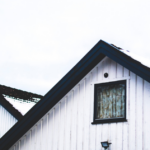If you have ever walked into a room or house that has an issue with dampness, you would be all too familiar with that musty smell that occurs due to a lack of ventilation and an abundance of moisture.
Dampness in the home can be a major problem, dampening your mood and dampening down your spirits. It’s not just an irritant – dampness can wreak havoc on your furniture, carpets, clothes and even your health. But damp doesn’t have to rule you.
Whether you are renting or a homeowner, the early signs of damp and mould are not ones that you want to miss. This guide to Dealing with Damp in the Home will guide you through impacts it can have on your home and the best ways to deal with it (and trust us, you need to deal with it!).
What is Damp?
Damp refers to the presence of moisture, water and condensation being present in an environment (and in this case, your home or in particular your bedroom).
Most damp spaces in the average house are damp due to a lack of ventilation from a kitchen, bathroom or laundry, but they can easily occur anywhere in the home and often left untreated can cause serious damage to the infrastructure.
Damp can affect your health by providing perfect conditions for the growth of moulds, fungi, bacteria and mites. It can also cause damage to many household items such as wood surfaces, plaster walls, books, clothing and shoes.
What causes damp?
The cause of damp is an excess of unwanted moisture in the air which has no way of escaping. So think steam when cooking, drying clothes in a small laundry room or perspiration caused through showers or baths.
Any building or plumbing problems that allow water/moisture in the building can also lead to damp problems.
Other common factors that allow moisture into your property include poor ventilation, leaking roof, plumbing problems such as leaking washing machines or dishwashers and failed damp proof course.
The list of causes is quite large but it’s important to recognise the warning signs of the different types of damp to ensure you treat the right ones.
How to prevent damp?
There are a few easy ways to ventilate your house and reduce damp. If you follow these tips you can have a dry, healthy home that holds in heat, reduces emissions and keeps money in your pocket!
Regularly air your home
Open your doors and windows in the mornings for 10-15 minutes as well as after using a heater to avoid condensation.
Dry washing outside
Use a washing line or rack under a covered verandah. Only use your dryer to finish them off or when it’s raining.
Use extractor fans and rangehoods
Make sure they are clean, serviced and the right size for the job. It may sound silly, but check ifs they send the air outside rather than to your ceiling space.
Turn on the bathroom fan
Make sure you shut the door and open the window a little. Start the fan before you jump in the shower or bath and leave it running until the moisture is gone.
Cook wisely
Make sure you use lids on your pots to stop the steam escaping. Also open a window nearby to help keep the air flowing.
Keep furniture away from the walls
In winter, a 10cm gap will prevent mould and aso keep the air circulating. Likewise, if you keep the wardrobes open slightly, the air circulation will discourage mould growth.
What is Rising Damp?
Rising damp is a fairly rare form of damp that affects the walls of buildings. It basically occurs when the wall sucks up all of the moisture from water (and the salts it contains) on the ground. Whilst it may be a relatively controversial type of damp (we will let you get into that debate), it is a type of damp that should be taken seriously.
It is important to recognise the difference between common damp issues and rising damp so that if you ever see any of the tell-tale signs, you will be able to start treating the area before you have major structural damage.
What are the signs of Rising Damp
It can sometimes be a little tricky to tell the difference between rising damp and other forms of damp such as penetrating damp or condensation.
However there are some more common signs of rising damp that you need to know:
- Damp dark patches on the wall (to be sure it is rising damp you want to check if the brickwork ir actually wet and not just the plaster/wallpaper)
- Tide marks of salts
- Damp and musty smells
- Decaying timber (think skirting or floor boards)
- Peeling wallpaper or blistering paint
- Discolouration and fragmenting plaster
How to fix Rising Damp
If you think you may have rising damp in your home, you will definitely want a professional diagnosis from a qualified surveyor – who will complete a rising damp survey and most likely an analysis of the salts.
There are a few ways to fix a house with rising damp and it can be quite costly. You could be set back a whopping $10,000 1 if you are in need of re-plastering, re-painting and re-coating of the walls. If your floors are timber, depending on how damp they are, might also need replacing adding to the total bill. If you also factor in waterproofing and other fees, unfortunately you could be looking at costs exceeding $25,0002.
For those of you that are handy, there may be a few DIY options that could help such as a chemical injection of a damp proof course under your house or replacing damp course membrane under your home every few years – however like anything, if you want to ensure it’s done properly and give your home the best chance in the long run, best leave this process to the pro’s.
Whichever you choose, you can rely on Nimble to help with the financial load with options such as a Personal Loan to cover the upfront costs so that you can sort it out ASAP.
What is Penetrating Damp?
Penetrating damp refers to moisture which has been absorbed through the external layers of a structure such as the walls, roof or below the ground. Doesn’t sound good, right? Well, like most types of damp, if you leave it untreated it can later lead to some significant problems in the home causing damage to your walls, floors, ceilings and possibly even cause rot to timbers.
Penetrating Damp can affect any part of your home at any age. So it doesn’t matter how new your humble abode is, if there is any defective workmanship, you can still suffer from damp issues.
What are the signs of Penetrating Damp?
As soon as you see the signs of Penetrating Damp, you need to get onto it ASAP. If you leave it, you may be facing some pretty significant damage and a heavy bill. To avoid structural timber rot, look out for these signs:
Localised Damp Patches
This may sound fairly obvious but if you see any patches of moisture that won’t dry out regardless of what techniques you use, you have found your first sign.
Mould Growth
If you see any mould growth or smell that strange musty smell, it could be an indicator of dampness in the walls in conjunction with condensation and mould growth.
Damaged Plaster
If your once smooth walls are now blistered, disintegrating or showing signs of ‘salting’ then you also need to investigate the cause. Salting can leave residue on the surface of the wall or surface which can appear almost fluff-like.
Rotting skirting boards or timber floors
If you can see any wet or dry rot on your household timbers then penetrating damp is a real possibility.
Damaged internal decoration
Another sign to watch out for is damp, discoloured patches on internal decor and walls. You could also see discolouration and tidemarks which are telltale signs of a damp issue.
As well as the signs of Penetrating Damp, you should also be on the lookout for areas which are mostly affected also. Here’s what to look for:
The Roof
It is important to regularly check your roof people! Be on the lookout for missing tiles, those shaped tiles at the top of the roof (called roof ridge tiles) and the points where the roof meets the wall or chimney (aka flashing). If you see anything that doesn’t look quite right, you will need to organise some maintenance to stop or prevent major issues.
External Walls
If you can see any cracks or missing pieces or mortar (you know, those bits of cement between the bricks) you could be looking at the signs of Penetrating Damp. If so, make sure you organise some repairs with the appropriate materials, otherwise the masonry or external render could become porous or crack meaning the rainwater can get in.
Door Frames
If your door doesn’t slam quite as well as it used to, take a quick look while you are there to see if there are any cracks around the door frame that might need repairing. If it doesn’t have a weather bar (some contraption that sits at the bottom of the door to protect from hectic rain), it may be time to invest in one.
Window Frames
Take a look for any gaps or cracks in the window, no one likes a cool breeze on a chilly winter night and likewise, a leak during a storm. If you see any, be sure to fill them with a flexible frame sealant to prevent the moisture sneaking in. Also check to see if the window design includes any features designed to stop water running on the wall under the window sill, if there isn’t, don’t stress. A trip to your local trade store could be quite informative when it comes to DIY weather-proofing.
Gutters, Downpipes and Drains
We all know we should check our gutters but who actually likes doing it? When you get up there to clean them out (add it to your to-do list if it’s been more than 6 months), ensure you take a peek at the status of your rainwater goods. If you can see any leaks, they could be causing penetrating damp to your property. Make sure gutters, downpipes and drains aren’t blocked, causing water to back up also.
Bricks
Take a walk around the property and check for bricks that have become damaged or porous. These bad boys could be allowing water access to your home, which is not a good thing! They will need to be repaired or painted using an exterior silicone water-repellant or a good old lime wash to allow your walls to breathe. This is also a great preventative measure so if you’re ever in doubt, get onto it early as it will be far more expensive further down the track.
How to fix Penetrating Damp?
Once you have found where the problem is and what is causing it, there are few options to fix the underlying issue as well as the damage. Although there are many DIY options, it is always best to consult a professional if you are unsure about any of the processes.
Always leave the complex or dangerous jobs to those that are trained and skilled. Heights are generally a no-no unless you work in those fields as without the correct PPE and training, accidents are a risk.
Another thing to consider is the protection and long-term solution for your house. If you want a high quality finish that is likely to withstand the test of time and help your house maintain its value, it’s wise to spend extra time and money to have it done properly.
Here are a few quick fixes, long term solutions and tips to fix and protect your property:
Replace or repair damaged brickwork
If you have found any damaged or cracked brickwork, the best way to repair it is to simply replace the brick and voila!
Although this may sound complicated, if you are quite the DIY savvy, you should be able to give it a go yourself with the help of Youtube for a much more affordable price. If you’re not confident with replacing a brick or it involves working from a height, you might need to get a handyman or builder to help you out. On average, a bricklayer may charge between $50 and $120 per hour$25,0003.
Repoint damaged mortar
Repoint is basically the process of filling the cement back in between bricks, there are a few technical terms for this, but basically you’re filling the holes. Depending on the size of the area, you may choose to do it yourself which could take 1-2hrs and is easily achievable with the help of online video tutorials. Otherwise a builder will be able to help you fairly quickly depending on how much needs to be fixed.
Repair or replace damaged render
If you have damage to the existing render then you will need to get it fixed. The main problem here is that if the whole house needs to be done, you are looking at quite the job.
A house render can cost between $30-$50/sqm4 depending on the business you go with. It is more affordable to go with a cement option whilst acrylic can be more expensive. For a full job, it could cost around $12,0005for a small family home or a whopping $20,0006for a larger, double storey home.
Each state has different licensing and restrictions when it comes to hiring someone to do the rendering, so make sure you use someone who is qualified to do the job so it doesn’t come back to haunt you in the long run.
Nimble has a renovation loan which can give you the financial freedom to repair your home.
Paints, creams and water resistant treatments
Another option which is quite easily a DIY solution (or you totally hire a professional!) is to waterproof your house by adding an external barrier such as an external masonry paint or other waterproof treatment.
Do keep in mind though:
If you are going to do the entire house, you may need scaffolding. So be sure to factor this into your costs as hiring a scaffolding company can be a little costly. Check out your local hardware store for more affordable equipment hire options.
The other thing to consider is the time it takes to do this kind of work. It is quite a job to take on (it’s achievable but time-consuming).
If you do decide to hire a professional, you can expect to be charged anywhere from $15 to $457 exterior per square metre for brickwork.
Expect to pay between $5,500 to $8,0008 for a 2 storey, 3 bedroom house. Whilst a 2-storey weatherboard home could set you back $10,000 to $20,0009 depending on condition or size.
Keep in mind that the cost would include prep work and painting all previously painted surfaces also.
Fix the roof
There are many roof defects that can lead to penetrating damp. You definitely want a professional to carry out this type of work as it involves height and can be a bit more dangerous to do on your own. A good roofer can also spot and fix small defects quite easily.
Always get recommendations when looking for a roofing expert and be sure to get a few opinions, especially if the first recommends a whole new roof!! This could be a very expensive way of fixing a very small defect (and that’s a lesson you don’t want to learn).
A roof repair specialist may charge by the hour or per square metre. Hourly rates can be between $40 to $9010 however a square metre roof repair quote can be more accurate, in which case you are looking at $15 to $35 per square metre on average. Many factors will contribute to the varied rate such as the type of roofing materials needed, access to the roof, complexity of the work and the expertise of the roofer.
For minor roof repairs you could be looking at an amount from $1,000 however for complete restoration, you could be looking at up to $12,50011. So if you think you may have any roof issues, definitely get onto it ASAP to prevent major repairs.
Seal around the windows and doors
You can quite easily add or replace old silicone sealant around your windows or doors with a little DIY knowledge. Likewise, you can replace or add trim in areas where it is damaged or lacking. Check out Youtube for handy tutorials!
What is Condensation?
Remember when you were a kid and the windows or mirrors used to fog up in the cooler months and you could draw on them (the old folks didn’t approve but it was still fun, right?)..
Well, now that we are all grown up, condensation (whilst it’s still fun, let’s be real!) is not such a great thing in your home.
So what is it?
Well it’s what happens when you mix warm air with cold surfaces or when there is too much humidity in your home. For example, your bathroom is cold, your shower is sizzling hot and the air collides to create a whole room filled with condensation, cue foggy mirrors (which are hard to wipe when you need to get ready in a hurry!).
Whilst a little bit of fog and water might sound harmless, if left to sit on surfaces for an extended period of time, it can encourage black mould to start growing on your walls, ceilings and around your windows. Which not only looks gross, but can lead to some unpleasant health issues which we will elaborate on shortly.
So how do you deal with it?
Here are a few pointers that might come in handy:
Control the condensation in your home
Use a squeegee to clean any droplets from your windows, mirrors or shower screen when it starts to build up. When you’re done, use a soft towel to clean up any excess moisture you find on walls or other surfaces.
Prevent condensation from reoccurring
You can invest in a dehumidifier to reduce the amount of humidity in your home. These bad boys pull the air through a fan and remove a majority of the moisture to help keep your surfaces dry. You may need two or three to place around the house as you will most likely need them in the kitchen, bathroom and bedroom (even your breath on a cold night can cause condensation on the windows and walls).
Make a few lifestyle changes
Always turn the extractor fan on when cooking and keep the lids on your saucepans to avoid excess steam being released into the air. If you can’t use the fan or it’s not that effective, open up a window when cooking, using a tumble dryer or taking a shower. And although it sounds contradictory, always shut the door when taking a shower so that you stop the humid air from travelling to other rooms.
Evenly heat your home
Keep the thermostat at the same temp in every room, and if you aren’t using rooms often, keep the door closed. You can also open up windows in that room for a few hours each day to prevent damp and condensation from forming.
What is mould?
Most of us know what mould looks like because we have seen it on a wall either at home or outside and thought ‘eeeeew’!
Mould is part of a group of very common organisms called fungi. It can be found anywhere and everywhere, both indoors and outdoors.
It may grow indoors in wet or moist areas that lack proper ventilation, including walls, ceilings, tiles, carpets, insulation material, wood and furniture. If moisture accumulates often mould growth will occur. Many types of mould exist and all have the potential to cause health problems.
How to remove mould from walls
There are many articles and video’s circulating the web, some involving chemicals and other’s a more natural approach. It’s important to weigh up the pros and cons of each method and determine if a DIY option is the right solution for your home. If you’re unsure it may be wise to consult an expert in the field of mould removal.
A few things to consider when cleaning:
Wear protective clothing
Mould can cause respiratory problems and skin irritation, so if you know you are sensitive or have an existing health condition definitely leave it to the professionals. However, if attempting to clean, make sure you wear a filtered mask to avoid breathing in mould spores. Also wear rubber gloves, a long-sleeved shirt and pants that you can wash in hot water to protect your skin.
And if using any chemicals, wear some safety goggles to protect your eyes.
Prepare the area
Make sure you remove any decor, curtains or lightweight furniture. If something is too heavy, cover it with plastic sheeting and secure it with tape. Protect the floor with an old towel to catch any drips. Since mold spores can travel, protect the rest of your house by closing the door of the room you are working on.
Use your chosen products
Read the warning labels and make sure you perform a test patch to ensure you don’t damage your surfaces. Do not intermix sprays as they may be incompatible with each other. Store all your chemicals according to their safety instructions and ensure you keep them away from children and pets. Always keep the area ventilated.
How to prevent mould from returning?
Since mould prefers a dark, humid environment, make sure you open up your windows and let in the fresh air to discourage mould growth. It’s best to do this early in the morning or late in the afternoon. If you can’t open windows, at least open the curtains during daylight hours.
Like all types of damp and condensation, the key to preventing mould is to catch it in its early stages so that you can try to eliminate it. It is hard to completely avoid mould, but if you find it to be a constant problem in your house, then definitely look into professional options for long-term management.
What are the health effects of mould and damp?
Mould produces tiny particles called spores, and simply they are ‘no good’.
Spores are carried through the air and may cause health problems by people who are sensitive or allergic to them. These could cause a runny or blocked nose, eye or skin irritation and sometimes wheezing. On occasion, it can cause more severe reactions. Rarely, a lung infection might be a result. It is important to note, not all people experience health problems from mould.
For people with asthma, inhaling mould spores may cause an asthma attack.
People with asthma, allergies or breathing conditions can be more sensitive to mould. Likewise, if someone has a weak immune system (cancer patients, HIV infected or organ transplant receivers) or a chronic lung disease (Chronic Obstructive Pulmonary Disease or emphysema, they are more at risk of mould infection particularly in the lungs.
The information on this website is general in nature and does not take into account your objectives, financial situation or needs.
- https://www.bhg.com.au/rising-damp-solutions-treatments
- https://www.bhg.com.au/rising-damp-solutions-treatments
- https://hipages.com.au/article/how_much_do_bricklayers_cost
- https://www.canstar.com.au/home-loans/rendering-cost
- https://www.canstar.com.au/home-loans/rendering-cost
- https://www.canstar.com.au/home-loans/rendering-cost
- https://hipages.com.au/article/how_much_do_painters_cost#Cost%20to%20paint%20house%20
- https://hipages.com.au/article/how_much_do_painters_cost#Cost%20to%20paint%20house%20
- https://hipages.com.au/article/how_much_do_painters_cost#Cost%20to%20paint%20house%20
- https://hipages.com.au/article/how_much_does_roof_repair_cost
- https://hipages.com.au/article/how_much_does_roof_repair_cost
Popular Posts

12 Ways to Make Money Without Having a Traditional Job
August 19, 2019

The complete home maintenance budget guide and how a home renovation loan could help
April 30, 2019

Our Before-and-After Photo Competition
December 14, 2021

Budget Planning for Students: The University Student Budgeting Guide
June 5, 2019